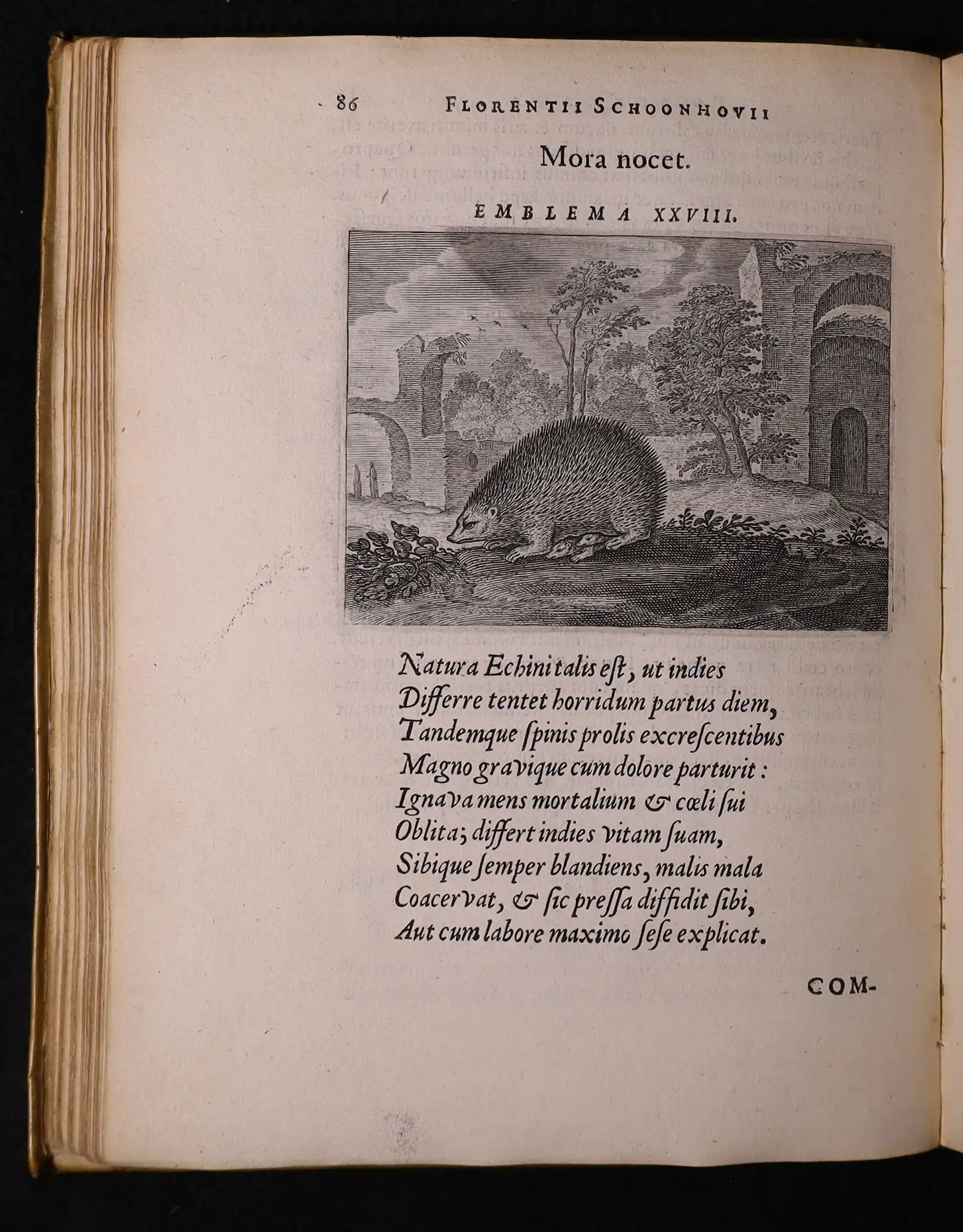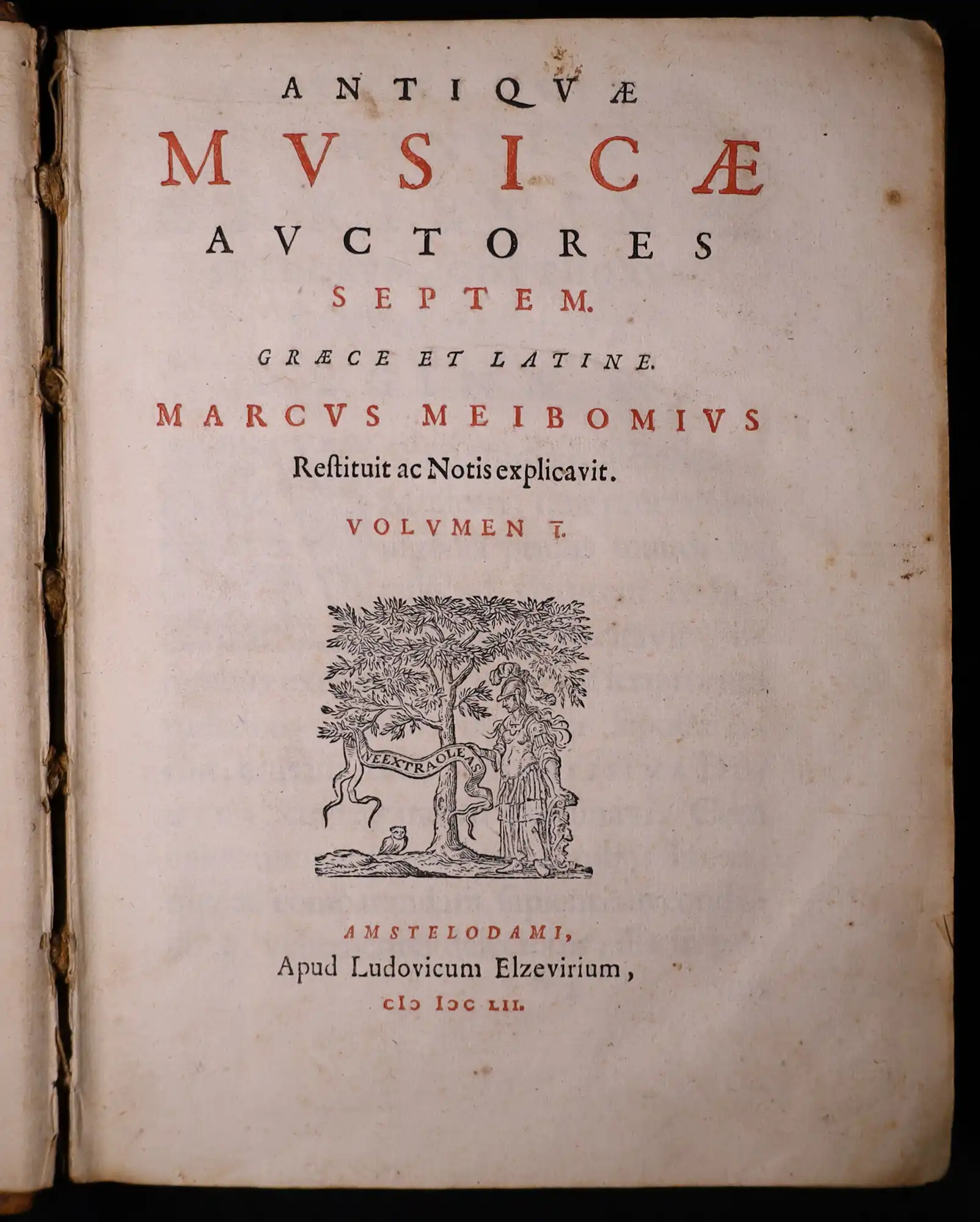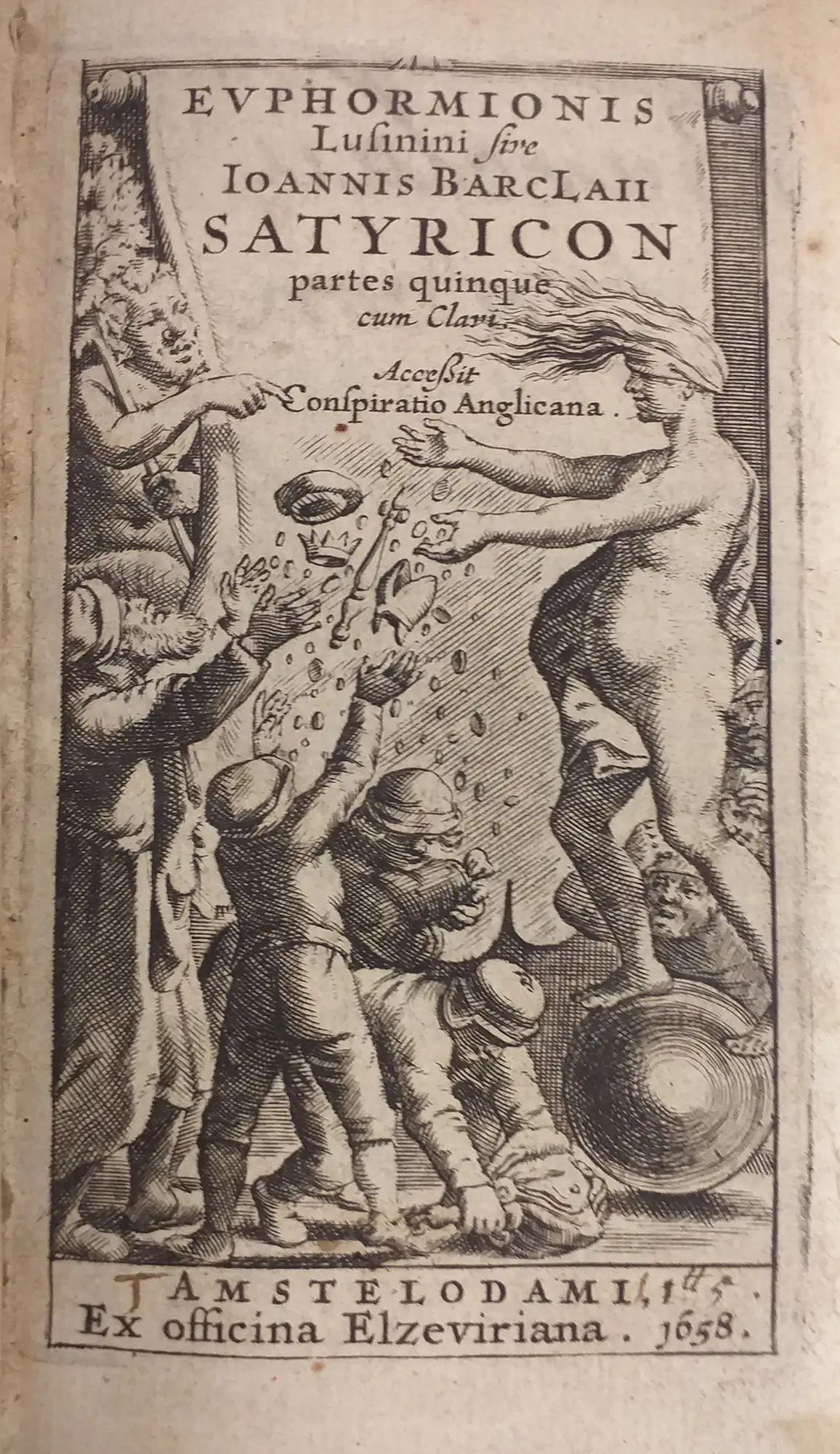Case 17
- Dutch Printing: Elzevir

Florentius Schoonhovius. Emblemata Florentii Schoonhovii I. C. Goudani. Lugduni Batavorum (i.e. Leiden): Ex officina Elzeviriana, 1626.
The Dutch publishing trade of the seventeenth century owed its pre-eminence to the speculative spirit of a venturesome mercantile community, ever vigilant for fresh markets, and not greatly hampered by respect for traditional authority. The two leading firms were Plantin (see Case 14) and Elzevir, which reigned supreme in the Protestant north.
The firm was founded by Louis Elzevir (1540-1617), who first worked in Plantin’s shop in Antwerp, but settled in Leiden, initially as a bookseller, before publishing his first book in 1593. By the time of his death in 1617, Louis had established the firm on a broad international basis, with a specialty in classical works and scholarship.
The 1626 quarto edition of Schoonhovius’ Emblemata displayed here is from the third generation of the firm, printed by Isaac Elzevir (1596-1651), a grandson of Louis, and marks the peak period of the Elzevir firm.
--S.H. Steinberg. Five hundred years of printing. London: British Library, 1996.

Florentius Schoonhovius. Emblemata Florentii Schoonhovii I. C. Goudani. Lugduni Batavorum (i.e. Leiden): Ex officina Elzeviriana, 1626.
Open image in new window

Antiquae musicae auctores septem: graece et latine. Amstelodami: Apud Ludovicum Elzevirium, 1652.
This 1652 quarto edition of a book about ancient Greek and Roman music theory is a production of the Amsterdam branch of the Elzevir firm, run by two grandsons of the founder, Louis III in partnership with Daniel Elzevir (1626-80).
The Elzevir firm utilised several printer’s devices, four of which were in common use. This title page features the device of the Amsterdam Elzevirs: a figure of Minerva with owl, shield and olive tree, with the motto ‘Ne extra oleas’.

Antiquae musicae auctores septem: graece et latine. Amstelodami: Apud Ludovicum Elzevirium, 1652.
Open image in new window

John Barclay. Euphormionis Lusinini sive Ioannis Barclaii Satyricon partes quinque. Accessit Conspiratio anglicana. Amstelodami: Ex officina Elzeviriana, 1658.
The Amsterdam branch of the Elzevir firm published large volumes of books by eminent Continental and British authors, but also diversified by issuing the works of contemporary authors. The Amsterdam branch became extinct with the death of Daniel, whilst the Leiden branch survived until 1712.
The reputation of this famous and long-lived Dutch family firm lay in its scholarship, its international reach, and large outputs offering value for money, rather than in its typography.
Displayed here are two small duodecimo editions – a format in which the Elzevirs (following Aldus) were prolific. The first is the fifth part of Satyricon, a severe satire on Jesuits by the Scottish-born Latin poet John Barclay (1582-1621).

John Barclay. Euphormionis Lusinini sive Ioannis Barclaii Satyricon partes quinque. Accessit Conspiratio anglicana. Amstelodami: Ex officina Elzeviriana, 1658.
Open image in new window
![Marin Cureau de La Chambre. L'art de connoistre les hommes. Amsterdam: Chez Iacques le Jeune [i.e. L. and D. Elzevir], 1660.](https://www.reedgallery.co.nz/__data/assets/image/0004/999706/17d.webp)
Marin Cureau de La Chambre. L'art de connoistre les hommes. Amsterdam: Chez Iacques le Jeune [i.e. L. and D. Elzevir], 1660.
The second is a book on physiognomy by the French physician Marin Cureau de La Chambre (1594-1669).
![Marin Cureau de La Chambre. L'art de connoistre les hommes. Amsterdam: Chez Iacques le Jeune [i.e. L. and D. Elzevir], 1660.](https://www.reedgallery.co.nz/__data/assets/image/0004/999706/17d.webp)
Marin Cureau de La Chambre. L'art de connoistre les hommes. Amsterdam: Chez Iacques le Jeune [i.e. L. and D. Elzevir], 1660.
Open image in new window



![Marin Cureau de La Chambre. L'art de connoistre les hommes. Amsterdam: Chez Iacques le Jeune [i.e. L. and D. Elzevir], 1660.](https://www.reedgallery.co.nz/__data/assets/image/0004/999706/17d.webp)